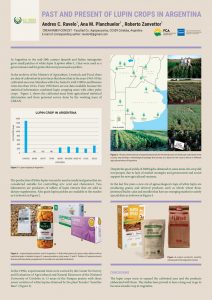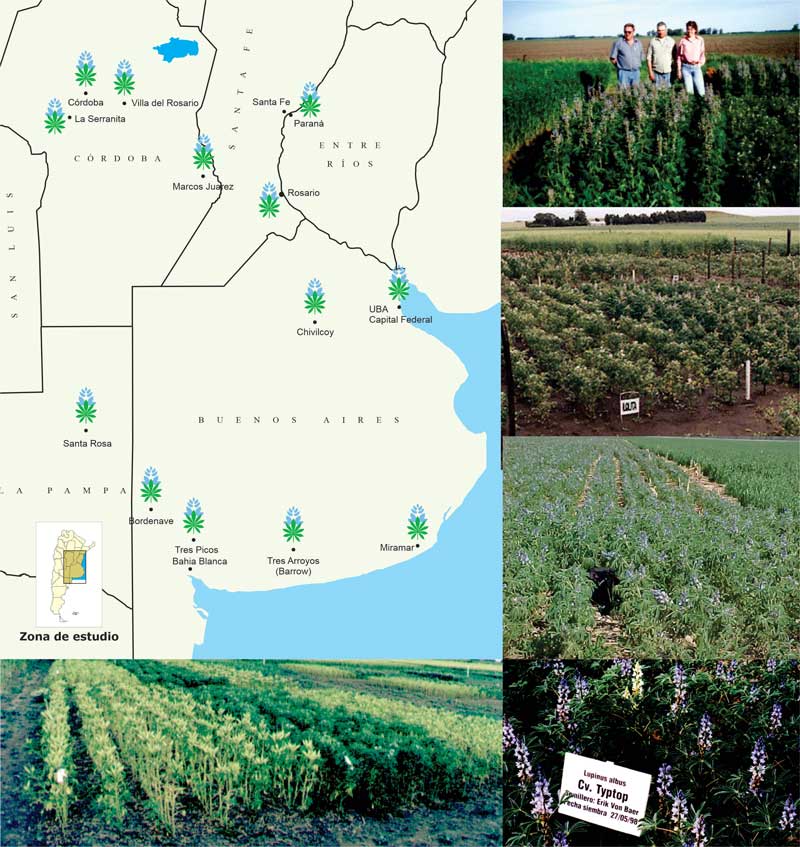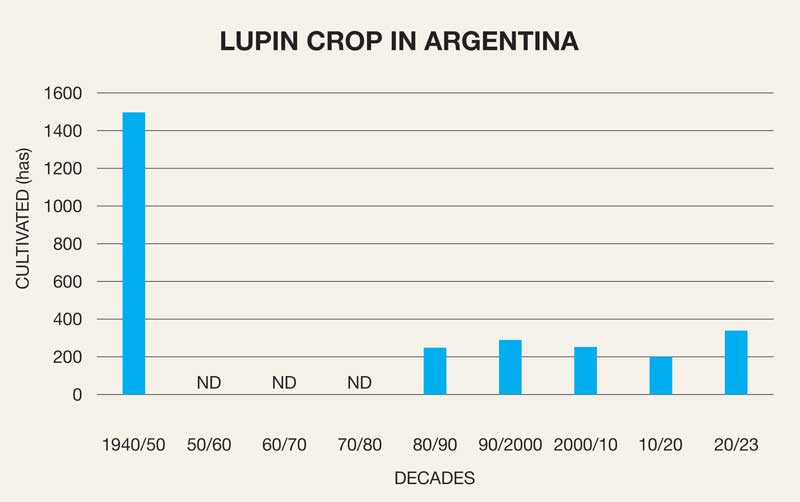
Andres C. Ravelo1, Ana M. Planchuelor1 , Roberto Zanvettor1
1CREAN-IMBIV-CONICET - Facultad Cs. Agropecuarias, CC509 Córdoba, Argentina
E-mail of corresponding author: ravelo43@gmail.com
In Argentina in the mid-20th century Spanish and Italian immigrants grew small patches of white lupin (Lupinus albus L.) that were used as a green manure and for grains that were processed as pickles.
In the archives of the Ministry of Agriculture, Livestock and Food, there are data of cultivation by provinces that shows that in the years 1943-45 the cultivated area was: Mendoza with 6 ha, Santa Fe with 1500 ha and Buenos Aires less than 10 ha. From 1950 there are not data available because the statistical information combined lupin cropping areas with other pulse crops. Figure 1, shows the cultivated areas from agricultural statistical information and from personal survey done by the working team of CREAN.
The production of bitter lupins was and is used as medicinal grains that are considered suitable for controlling uric acid and cholesterol. Two laboratories are producers of tablets of lupin extracts that are sold as dietary supplements. Also grain lupins pickles are available in the market as it is shown in Figure 2.

Figure 2.- Lupine-based products sold in Argentina. A: Bulk dried grains of Lupinus albus bitters sold as medicinal grain in dietetic shops; B: Lupines pickles in salty water; C and D: Tablets of lupines extracts that are sold as a dietary supplement to combat uric acid and cholesterol.
In the 1990s, experimental trials were carried by the Center for Survey and Evaluation of Agricultural and Natural Resources of the National University of Córdoba in 13 areas of the Pampas prairie with three sweet varieties of white lupine obtained by the plant breeder "Semillas Baer" (Figure 3).

Figure 3.- Photos of the network of experimental trials for the introduction of white lupin cultivation in the country and develop a technological package that serves as a basis for the crop to thrive in different agricultural areas of Argentina.
Despite the good yields of 3800 kg/ha obtained in some areas, the crop did not prosper due to lack of market strategies and government and social support for new agricultural ventures.
In the last five years a new era of agroecological crops of white lupin are producing grains and derived products such as whole wheat flour, premixed budin-cake and noodles that have an emerging market to satisfy special diets as is shown in Figure 4.
Conclusions
The lupin crops seem to expand the cultivated area and the products elaborated with them. The studies have proved to have a long way to go to become a leader crop in Argentina


